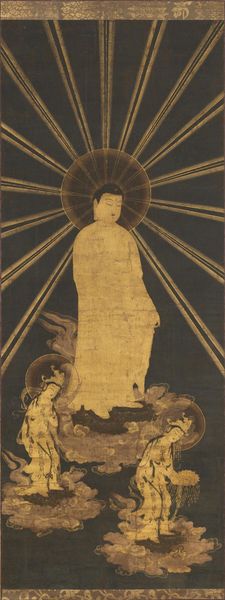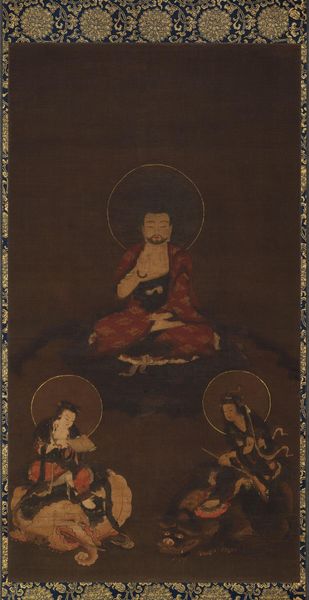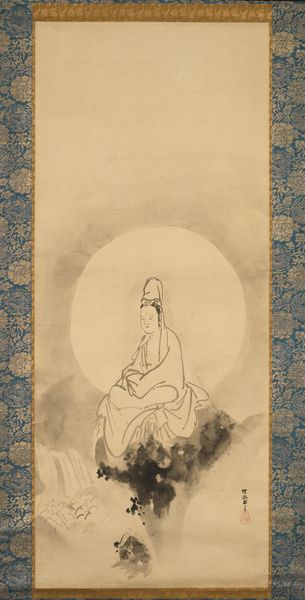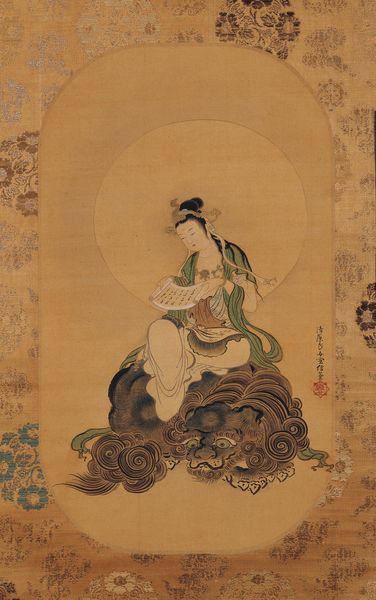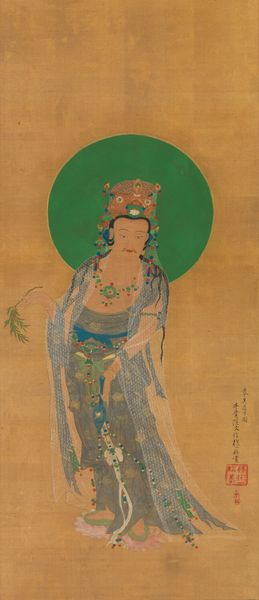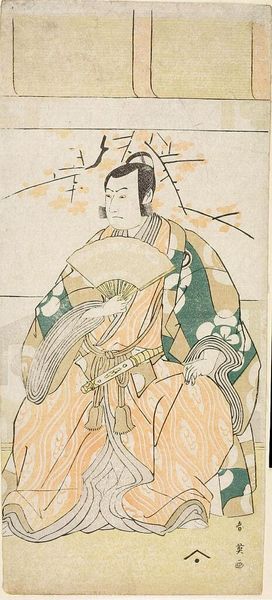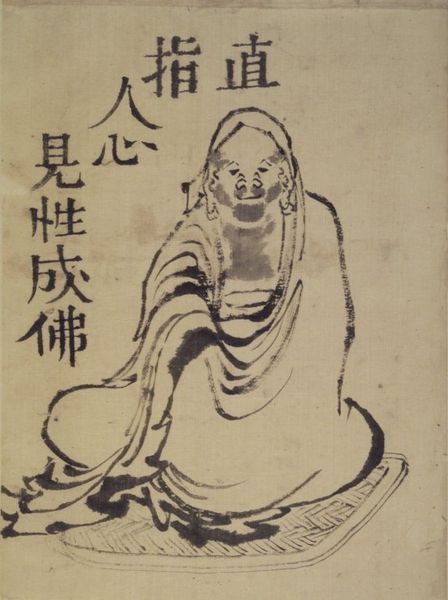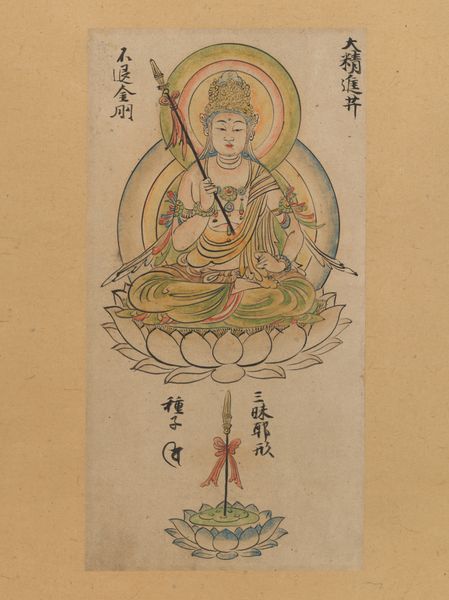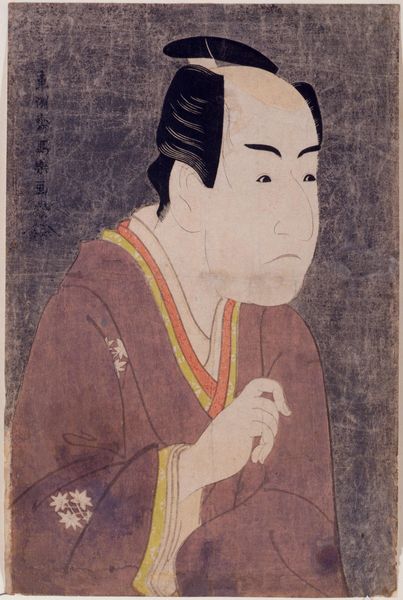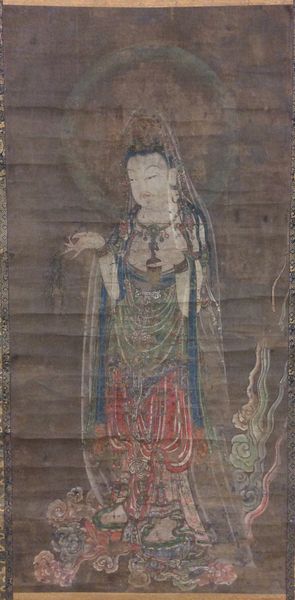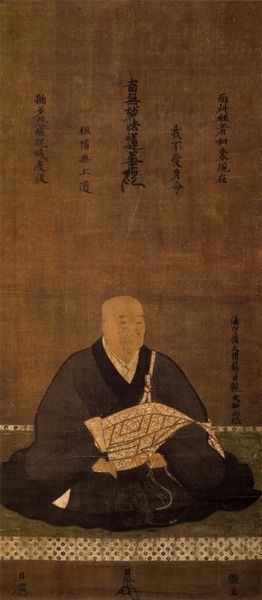
watercolor, hanging-scroll
#
portrait
#
water colours
#
asian-art
#
ukiyo-e
#
japan
#
figuration
#
watercolor
#
hanging-scroll
#
coloured pencil
#
line
Dimensions: 32 7/8 × 12 3/8 in. (83.5 × 31.43 cm) (image)60 1/2 × 17 3/4 in. (153.67 × 45.09 cm) (mount)
Copyright: Public Domain
Curator: Here we have Sakai Hōitsu's "Welcoming Descent of Jizō," a watercolor and colored pencil piece on a hanging scroll, dating back to the early 19th century. Editor: The muted palette and flowing lines give it such a serene and almost ethereal quality, don’t you think? There is also a sense of otherworldly gentleness, almost a maternal protection coming from the central figure. Curator: Indeed. Jizō is a bodhisattva, a figure in East Asian Buddhism particularly revered as a protector of travelers, women, children, and particularly those in the six realms of suffering. His androgynous representation suggests an erasure of conventional identity constraints, as this deity helps marginalized people to navigate their pain across intersectional oppressions of gender, race and class. Editor: The staff, the robes, even the orb he holds—they're not just artistic choices, are they? These visual attributes signal something profound within the culture, reflecting the deity’s qualities as an advocate in the face of all suffering. The halo itself is also representative, in that Jizō is represented as having the power to traverse all boundaries in the pursuit of providing aid and comfort. Curator: Exactly. Consider the history: in Edo-period Japan, widespread famine, poverty, and infanticide made Jizō an exceptionally resonant figure, especially for women. Editor: The choice of medium here is key too. Watercolour lends itself to creating softer edges and gentle gradations, all reflecting a non-judgmental spirit. Jizō welcomes all. Curator: Moreover, by presenting the descent—note the wispy clouds beneath his feet as he descends into our world—Hōitsu evokes a very hopeful vision, providing solace to those who are vulnerable and calling for Jizō to hear their struggles and to grant safe passage into another life. Editor: Knowing that makes the work even more powerful. There's real weight to the way he seems to float between worlds, representing both compassion and strength. Curator: I agree completely; this work exemplifies the transformative potential of combining artistic skill and powerful cultural symbolism. Editor: Ultimately, for me, the artwork feels deeply touching, an embodiment of resilience through a visual shorthand honed over centuries.
Comments
minneapolisinstituteofart about 2 years ago
⋮
Japanese Buddhists worship Jizō as a compassionate deity with the ability to rescue suffering believers, especially those who have been reborn in hell. Here Jizō descends from the heavens on a cloud bank in the guise of a Buddhist monk, with a shaved head and wearing the multipaneled silk garments worn by ordained monks. He carries a wish-fulfilling jewel and a golden walking staff that jingles to announce his arrival. Although Sakai Hōitsu executed this painting primarily in ink and touches of gold, it is iconographically indistinguishable from painted and sculptural images of Jizō that emerged in the 1200s, when worship of this deity became widespread in Japan. Hōitsu is best known as a professional painter and reviver of the decorative, primarily nonreligious Rinpa style of painting that was popular a hundred years earlier, but he also spent the years 1797 to 1809 as a Buddhist monk, which may explain why he created a number of traditional Buddhist devotional paintings over the course of his career.
Join the conversation
Join millions of artists and users on Artera today and experience the ultimate creative platform.

